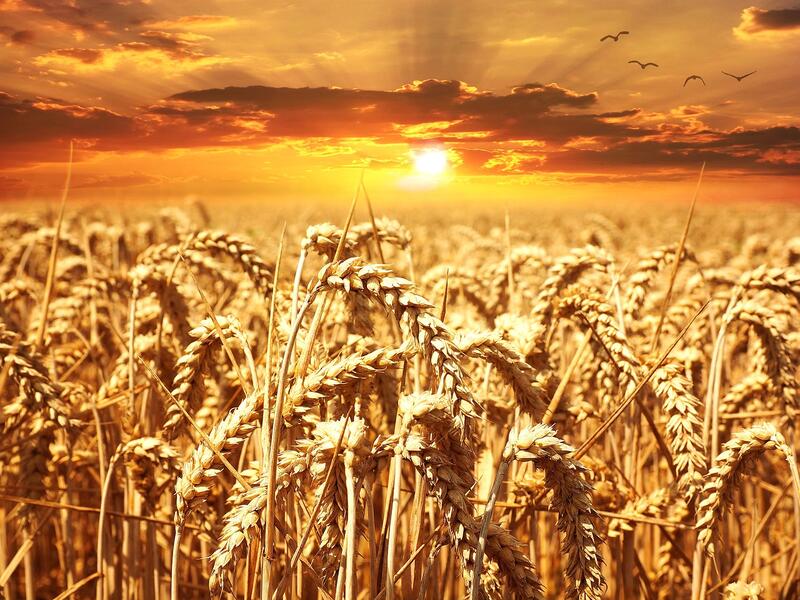Unleashing Sustainability: Decarbonizing Crop and animal production, hunting and related service activities Methods
This article explores methods for decarbonizing crop and animal production, hunting, and related services to advance sustainability in the agriculture industry.

The agriculture sector is one of the largest contributors to greenhouse gas (GHG) emissions globally. According to the Intergovernmental Panel on Climate Change (IPCC), agriculture, forestry, and other land use (AFOLU) accounted for approximately 23% of total anthropogenic GHG emissions between 2007 and 2016. Within the AFOLU sector, crop and animal production, hunting, and related service activities are responsible for a significant portion of these emissions. Decarbonisation in this sector is therefore crucial for mitigating climate change and achieving global climate goals.
What is Decarbonisation in Crop and Animal Production, Hunting and Related Service Activities?
Decarbonisation refers to the process of reducing or eliminating carbon emissions from a particular sector or activity. In the context of crop and animal production, hunting, and related service activities, decarbonisation involves reducing GHG emissions from agricultural practices, such as fertiliser use, livestock management, and land use changes. It also involves the adoption of low-carbon technologies and practices, such as renewable energy and sustainable land management practices.
Why is Decarbonisation Important in Crop and Animal Production, Hunting and Related Service Activities?
Decarbonisation in crop and animal production, hunting, and related service activities is crucial for several reasons. Firstly, reducing GHG emissions from this sector is necessary to mitigate climate change and achieve global climate goals. The Paris Agreement, which was signed by 196 countries in 2015, aims to limit global warming to well below 2°C above pre-industrial levels and pursue efforts to limit the temperature increase to 1.5°C. To achieve this goal, it is essential to reduce GHG emissions from all sectors, including agriculture.
Secondly, decarbonisation in this sector can also lead to co-benefits, such as improved soil health, increased biodiversity, and reduced water pollution. For example, sustainable land management practices, such as conservation agriculture and agroforestry, can improve soil health and increase carbon sequestration, while reducing GHG emissions. Similarly, reducing fertiliser use and improving livestock management can reduce water pollution and improve biodiversity.
Main Sources of Carbon Emissions in Crop and Animal Production, Hunting and Related Service Activities
The main sources of carbon emissions in crop and animal production, hunting, and related service activities are:
- Livestock: Livestock production is a significant source of GHG emissions, accounting for approximately 14.5% of global anthropogenic emissions. The main sources of emissions from livestock are enteric fermentation (i.e., the digestive process of ruminant animals), manure management, and feed production.
- Fertilisers: Fertiliser use is another significant source of GHG emissions in agriculture. The production and application of synthetic fertilisers result in emissions of nitrous oxide (N2O), a potent GHG.
- Land use changes: Land use changes, such as deforestation and conversion of grasslands to croplands, also contribute to GHG emissions. When forests and grasslands are cleared for agriculture, carbon stored in vegetation and soil is released into the atmosphere.
- Energy use: Energy use in agriculture, such as fuel for machinery and irrigation, also contributes to GHG emissions.
Reducing Carbon Emissions in Crop and Animal Production, Hunting and Related Service Activities
Several strategies can be employed to reduce carbon emissions in crop and animal production, hunting, and related service activities:
- Sustainable livestock management: Livestock management practices, such as improving feed quality and reducing herd sizes, can reduce GHG emissions from enteric fermentation and manure management.
- Sustainable land management: Sustainable land management practices, such as conservation agriculture, agroforestry, and integrated crop-livestock systems, can improve soil health, increase carbon sequestration, and reduce GHG emissions.
- Reduced fertiliser use: Reducing fertiliser use and improving nutrient management can reduce emissions of N2O.
- Renewable energy: The adoption of renewable energy, such as solar and wind power, can reduce GHG emissions from energy use in agriculture.
- Sustainable supply chains: Sustainable supply chains, such as reducing food waste and improving transportation efficiency, can also reduce GHG emissions.
Challenges Facing Decarbonisation in Crop and Animal Production, Hunting and Related Service Activities
Several challenges exist in decarbonising crop and animal production, hunting, and related service activities:
- Limited awareness and adoption of low-carbon technologies and practices among farmers and other stakeholders.
- Limited financial resources and incentives for farmers to invest in low-carbon technologies and practices.
- Limited access to markets and infrastructure for sustainable products and services.
- Limited policy support and coordination among stakeholders at the local, national, and international levels.
Implications of Decarbonisation for Crop and Animal Production, Hunting and Related Service Activities
Decarbonisation in crop and animal production, hunting, and related service activities has several implications:
- Increased sustainability: Decarbonisation can lead to more sustainable agricultural practices, such as improved soil health, increased biodiversity, and reduced water pollution.
- Improved resilience: Sustainable land management practices can improve the resilience of agricultural systems to climate change impacts, such as droughts and floods.
- Increased productivity: Sustainable agricultural practices can also lead to increased productivity and profitability for farmers.
- Improved food security: Sustainable agriculture can improve food security by increasing the resilience of agricultural systems and reducing the risk of food shortages and price volatility.
Conclusion
Decarbonisation in crop and animal production, hunting, and related service activities is crucial for mitigating climate change and achieving global climate goals. The main sources of carbon emissions in this sector are livestock, fertilisers, land use changes, and energy use. Strategies to reduce carbon emissions include sustainable livestock management, sustainable land management, reduced fertiliser use, adoption of renewable energy, and sustainable supply chains. However, several challenges exist in decarbonising this sector, including limited awareness and adoption of low-carbon technologies and practices, limited financial resources and incentives, limited access to markets and infrastructure, and limited policy support and coordination. Decarbonisation can lead to increased sustainability, improved resilience, increased productivity, and improved food security in crop and animal production, hunting, and related service activities.